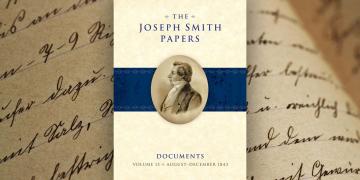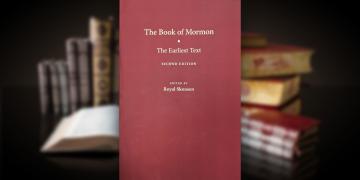You are here
Book of Mormon Central is in the process of migrating to our new Scripture Central website.
We ask for your patience during this transition. Over the coming weeks, all pages of bookofmormoncentral.org will be redirected to their corresponding page on scripturecentral.org, resulting in minimal disruption.
The Joseph Smith Papers Project, under the auspices of The Church of Jesus Christ of Latter-day Saints, has published a new volume in the landmark series. The Joseph Smith Papers, Revelations and Translations, Vol. 4: Book of Abraham and Related Manuscripts includes, for the first time, the extant Book of Abraham manuscripts, the first printed edition of the Book of Abraham, the manuscripts of the related “Egyptian alphabet and grammar” project, the Egyptian papyri associated with the project, and the original lead plates used in printing the Book of Abraham facsimiles all in one volume. This new publication is a facsimile edition, meaning it includes high resolution photographs of the documents in addition to transcriptions and annotations.
The editors of the new volume, Robin Scott Jensen and Brian M. Hauglid, met with bloggers today–––including Book of Mormon Central research associate Stephen O. Smoot–––at the Church History Library in Salt Lake City, Utah in conjunction with its publication and official release. They answered questions about the documents presented in the new volume (complementary copies of which were provided to participants) and provided an overview of their history and significance. “Joseph Smith had a rich scriptural output throughout his life,” Jensen said at the event. “If we want to understand the nature of Joseph Smith’s scriptural ‘translations,’ we really should look at the Book of Abraham.” By looking at the Book of Abraham manuscripts, scholars might be able to shed some light on Joseph Smith’s other translation efforts–––such as the Book of Mormon and the Bible translation/revision project–––and vice versa.
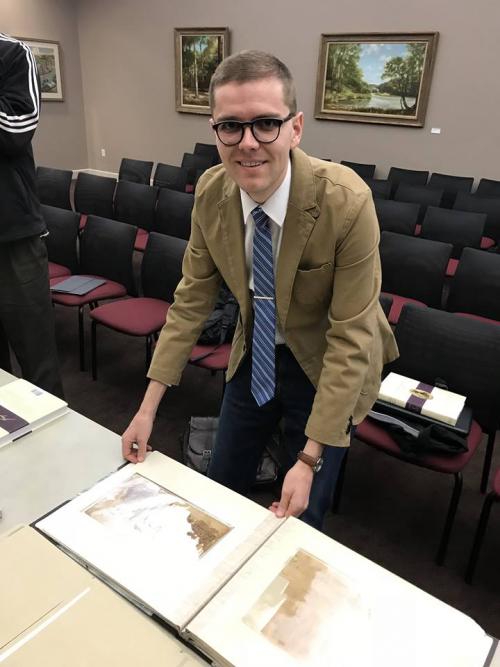
Indeed, as Jensen and Hauglid point out in their introductory remarks in the new volume, “Joseph Smith’s keen interest in Egyptian writings may have stemmed in part from his belief that the writing system on the gold plates from which he translated the Book of Mormon had an Egyptian component. A passage in the Book of Mormon explained that the writings on the plates were ‘in the characters, which are called among us the reformed Egyptian, being handed down and altered by us, according to our manner of speech.’”
Another potential connection between the Book of Mormon and the Book of Abraham, or at least the manner in which these texts were revealed or translated, comes from some evidence which suggest Joseph Smith used the seer stone in the translation of the papyri. “A few sources state that Smith used ‘the Urim and Thummim’—apparently his seer stone—during his Nauvoo-era work on the Book of Abraham,” write Jensen and Hauglid. However, “Differences in [the surviving] accounts [of the translation of the papyri] suggest that if Smith used a seer stone during the translation of the Book of Abraham, he did not use it at all times.”
These and other historical questions surrounding the Book of Abraham remain unanswered, and the relationship between the Egyptian papyri, the Book of Abraham manuscripts, and the Egyptian grammar and alphabet documents is not entirely straightforward. “After looking at these documents, I have a lot of unanswered questions,” Jensen said at the event. “The Book of Abraham is a contested topic for many, but I hope that with this new publication we can encourage people to work together to fully examine the implications that arise from these documents for how we understand Joseph Smith as a translator.”
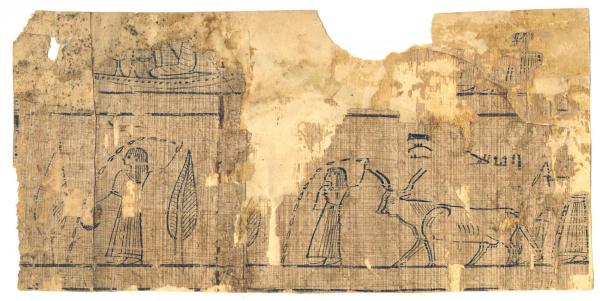
As Jensen and Hauglid stressed, the new volume is descriptive rather than interpretive. In other words, their work on the papyri and the Book of Abraham manuscripts in this new edition seeks to merely present the documents without staking out any definitive positions about their ultimate meaning, historicity, or theological validity. Jensen and Hauglid both expressed their hope that their work with this new volume will move the scholarly conversation about the Book of Abraham and Joseph Smith’s other translation projects forward.
“The Book of Abraham typifies Joseph Smith’s experience as revelator and translator,” Jensen and Hauglid observe. “Smith sought divine truth from his own age and from ancient documents, recorded that truth in a scriptural text, and imparted it to his people and the world. Understanding his efforts to decipher the Egyptian language adds nuance and detail to the complex story of the translation of the Book of Abraham.”
All of the documents presented in this new volume are available for examination online at the Joseph Smith Papers website. Annotations and commentary from the printed volume will be included online in the future.
An accessible single-volume overview of the Book of Abraham and the Joseph Smith Papyri can be found in John Gee, An Introduction to the Book of Abraham (Religious Studies Center, 2017). Also worth consulting is the Church’s Gospel Topics essay “Translation and Historicity of the Book of Abraham.”
For Book of Mormon Central resources on the nature of Joseph Smith as an inspired seer and translator, see:
“Why is a Seer Greater than a Prophet?” KnoWhy #86 (April 26, 2016)
“Why Was a Stone Used as an Aid in Translating the Book of Mormon?” KnoWhy #145 (July 18, 2016)
“Were Joseph Smith’s Translation Instruments Like the Israelite Urim and Thummim?” KnoWhy #417 (March 20, 2018)
Additional Photos
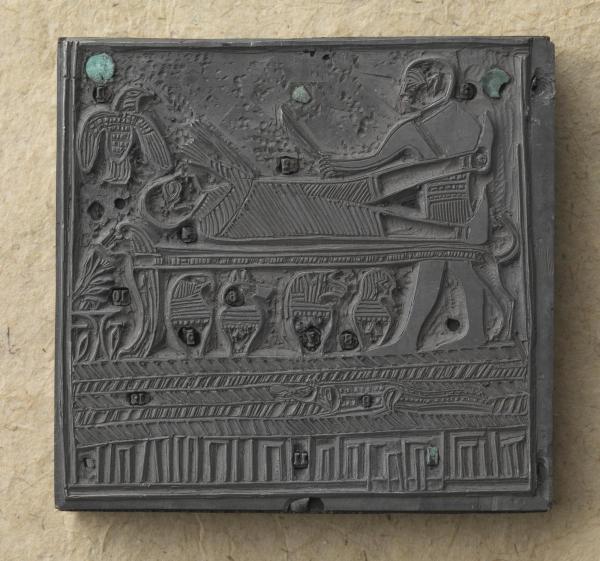
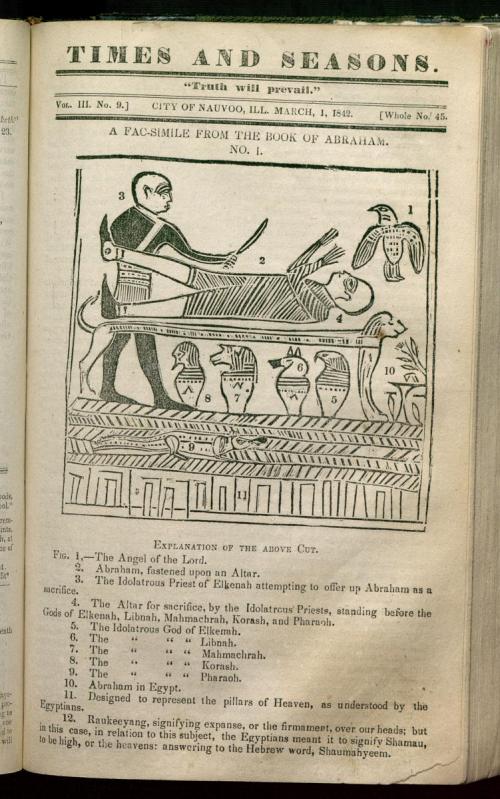
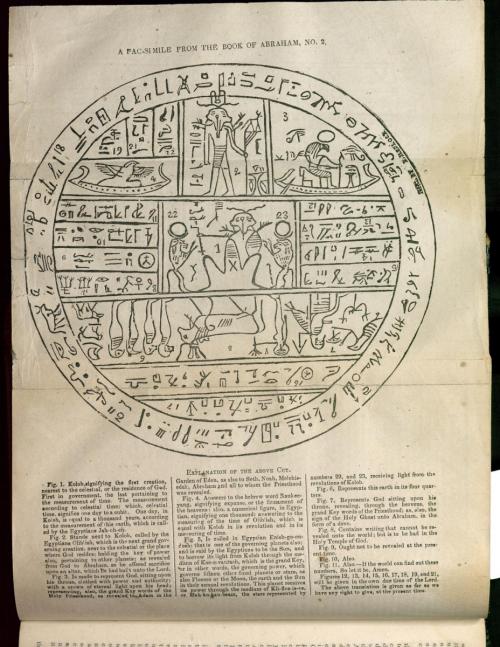
Subscribe
Get the latest updates on Book of Mormon topics and research for free






